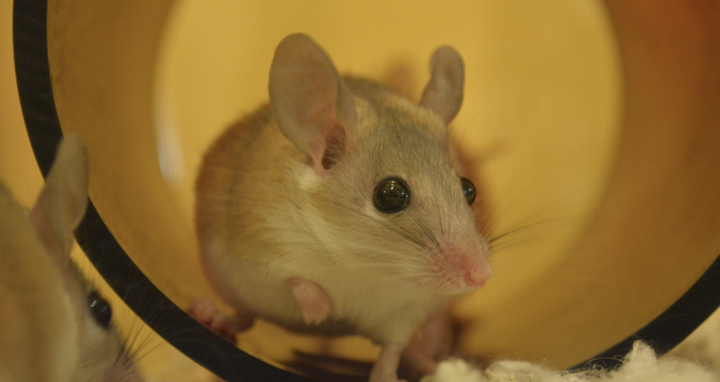How did menstruation evolve?
During the fertile phase of a female's life, the cycle of oogenesis, ovulation and bleeding prepares the body for possible pregnancy. Yet only a few mammals have a menstrual cycle. As well as the higher primates, including humans, it only occurs in certain bat species and the mouse-like elephant shrew, found in Africa. Some years ago, it was also discovered in the common spiny mouse (Acomys cahirinus). The remaining 5,500 or so known mammal species have an oestrous cycle. This cycle differs from the menstrual cycle in two fundamental ways: it does not involve bleeding and it requires an external trigger, such as the seasons or hormonal signals from a partner.
The common spiny mouse is very interesting in the context of menstruation research. “Research on humans and primates is very limited, and bat species are difficult to establish as lab animals,” explains Dr Christian Feregrino, a scientist in the research group led by Dr Darío G. Lupiáñez at the Berlin Institute for Medical Systems Biology (BIMSB), part of the Max Delbrück Center for Molecular Medicine in the Helmholtz Association (MDC). “With the spiny mouse, we have found a species that could make a suitable model organism to study the evolution of menstruation.”
New model organism for menstruation research
The evolutionary biologist wants to investigate the question of why a small number of species menstruate while others experience oestrus (being in heat). The European Molecular Biology Organization (EMBO) is providing him with a postdoctoral fellowship to carry out his research. The fellowship is worth €140,000 over the next two years. ”We intend to investigate the molecular and genetic causes of the menstrual cycle in the spiny mouse and compare them with humans,” says the researcher. He and his team will be collaborating with the research group headed by Dr Kerstin Bartscherer at the Hubrecht Institute in Utrecht/Netherlands, whose lab employs the spiny mice as a research model.
The knowledge derived from this project may facilitate the diagnosis and treatment of associated conditions, such as preeclampsia or endometriosis.
The Dutch lab will provide uterine tissue from spiny mice, which the researchers at BIMSB will study using single-cell sequencing. These techniques enable researchers to see which genes are being expressed by individual cells at any given time and to analyse their effects. Particularly in the endometrium, researchers can study processes associated with the menstrual cycle. “If these processes in the spiny mouse are similar to those in humans from a molecular perspective, we will have found a model organism allowing productive research into the menstrual cycle,” says Feregrino. “The knowledge derived from this project may facilitate the diagnosis and treatment of associated conditions, such as preeclampsia or endometriosis.”
Christian Feregrino is originally from Mexico. After working in Munich and Basel, the evolutionary biologist joined BIMSB at the MDC in May 2021. “The fact that I've now received the EMBO fellowship for my research project gives my work an enormous boost,” he says. The coveted fellowship offers not just funding but also courses in management and a mentoring programme. “This will help me navigate the grey zone that we postdocs find ourselves in,” Feregrino adds.
Text: Wiebke Peters






